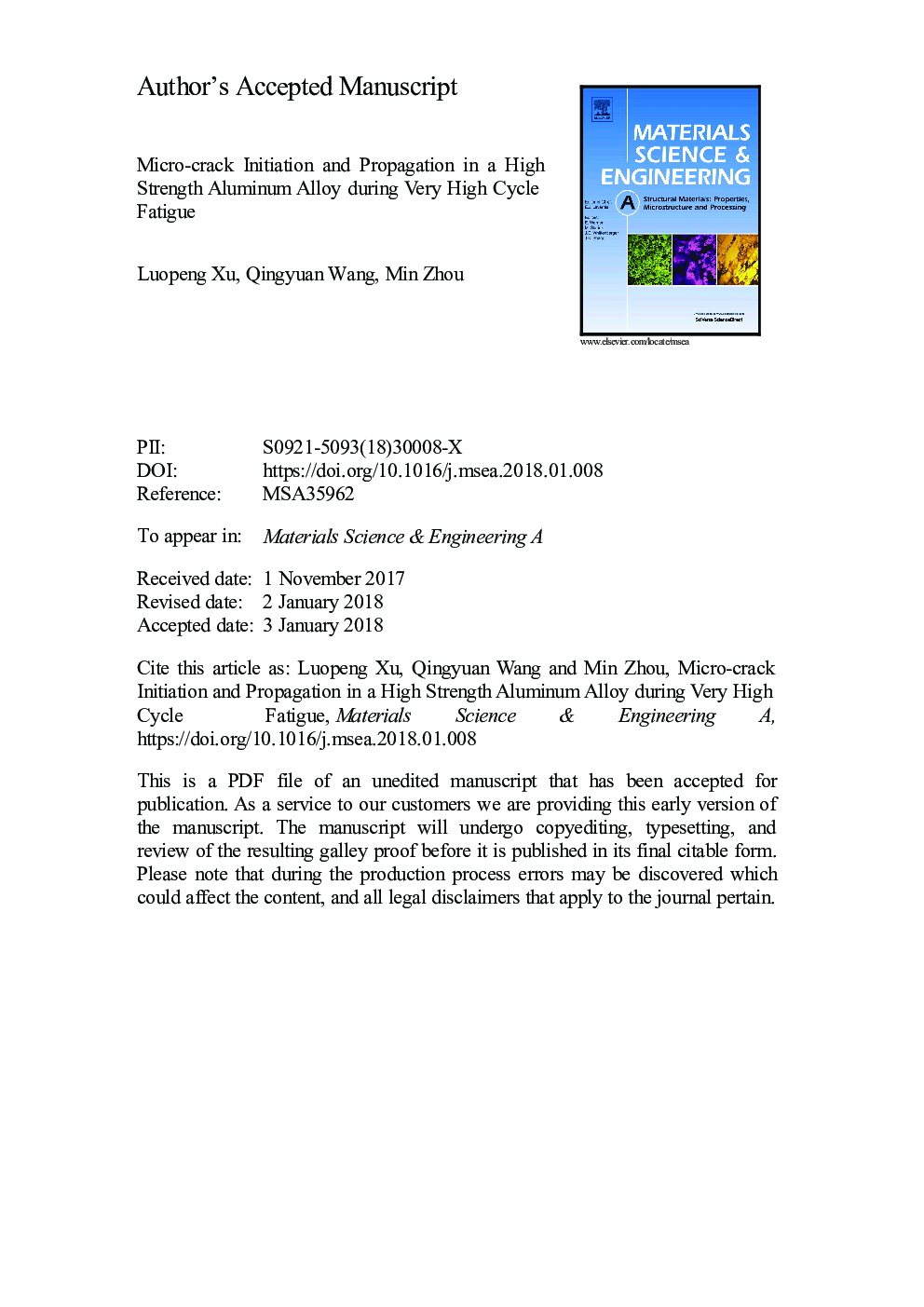| Article ID | Journal | Published Year | Pages | File Type |
|---|---|---|---|---|
| 7973674 | Materials Science and Engineering: A | 2018 | 36 Pages |
Abstract
The behavior of the new AA2198-T8 high strength aluminum alloy during tensile and very high cycle fatigue (VHCF) tests is studied. The results of the tensile tests show that the alloy in this heat treatment state has excellent mechanical properties compared with the same alloy with other heat treatment conditions and the 2024 and 7075 conventional aluminum alloys. The VHCF tests show a fatigue life plateau with the fatigue life reaching 109 cycles under a stress amplitude of 200 MPa, suggesting the existence of an endurance limit. Two different crack initiation modes are observed under scanning electron microscopy (SEM). Cracks tend to initiate from the interior of the specimen when fatigue life is in the VHCF regime. The interior crack initiation mode has a characteristic of a fish-eye, at the center of which is a white rough area (WRA) where the original micro-crack initiates. The thermo-mechanical process during ultrasonic fatigue is also studied. Quantitative analyses on micro-crack initiation and propagation show that the threshold stress intensity factor for stable micro-crack propagation is 1.66 MPa m1/2, and the threshold stress intensity factor for unstable macro-crack propagation is 3.17 MPa m1/2. Finally, analyses based on the Paris-Hertzberg law suggest that the micro-crack initiation stage likely consumes most of the fatigue life. The analyses do not apply to fatigue lives less than 106 cycles. The prediction of fatigue life is confirmed by the analyses of the thermo-mechanical process.
Keywords
Related Topics
Physical Sciences and Engineering
Materials Science
Materials Science (General)
Authors
Luopeng Xu, Qingyuan Wang, Min Zhou,
